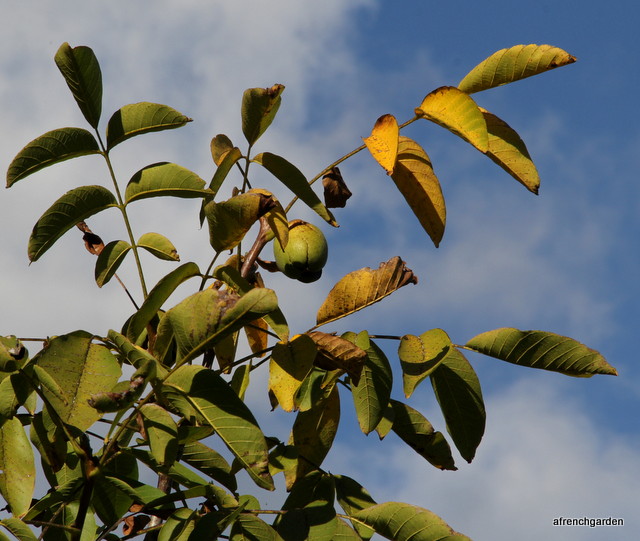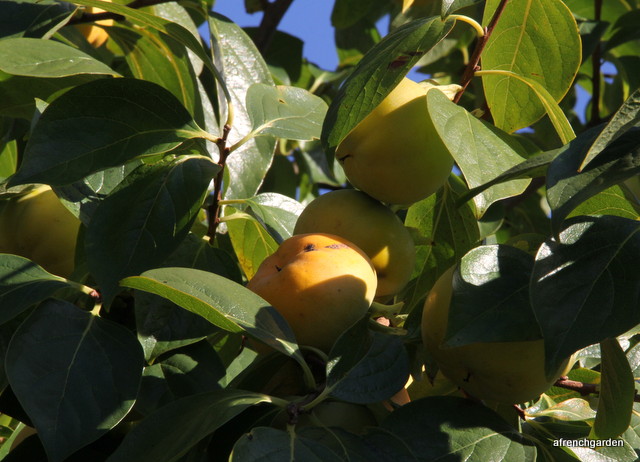
A misty start to a cool morning but at least we have had six millimetres of rain.
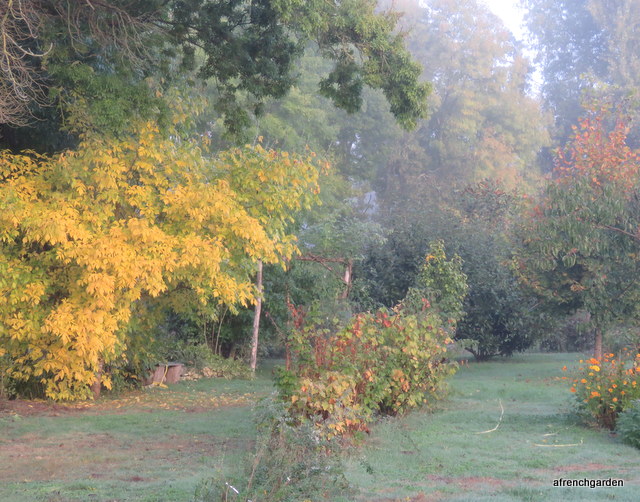
The early morning mist adds to the autumn feeling.
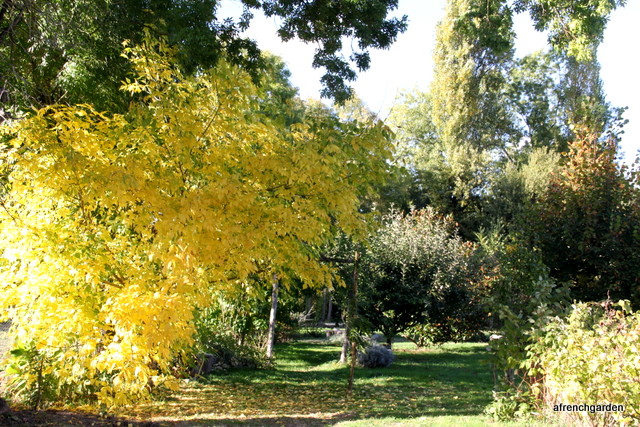
But the sun burns through and lights up the Maple-leaved Ash. I don’t have many red leaves in the garden in the autumn.

My best autumn colours are yellow, many of the trees brown and lose their leaves rapidly. The Mulberry bush is starting to be eye catching. Actually it was supposed to be a Mulberry tree but it had an accident just as it was really getting going but it accepted its unintentional coppicing with a better grace than Kourosh did. This is another tree he has raised from seed.
I thought I would try and find out if we should hope for fruit soon and did an Internet search. Taking my source as the FAO (Food and Health Organisation of the United Nations) I found out that Mulberry trees are commonly dioecious but may be monoecious, and sometimes will change from one sex to another.
This did not reassure me that we had any hope of ever getting any white mulberries. So if it is dioecious we will not get any fruit as we do not have a second tree in the vicinity to pollinate female flowers and if it produces only male flowers we will still have no fruit. Let us hope that it is monoecious and produces both male and female flowers as it can self pollinate.
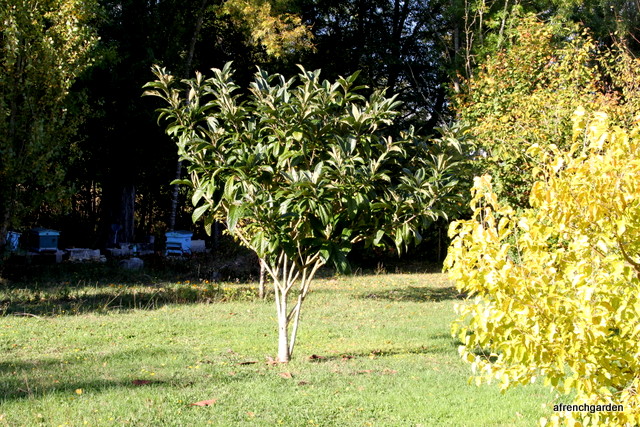
We have a happy event this year with the Loquat tree or Eriobotrya japonica. This is another of Kourosh’s seedlings! (We do buy most of our trees, this is just coincidence.)

For the first time the tree has flower buds. They are just starting to shoot out. The tree has not been watered over our dry summer yet is not showing any signs of stress. In fact, it looks as if it has enjoyed the hot weather.

The flowers are not yet mature and the fruit, if we get any, would not be ripe until next year. I doubt whether any fruit would survive the winter here but I am curious to know what the bees will think about the perfumed flowers.
I thought we had gathered all the walnuts but as the leaves start to fall they reveal still more fruit on the tree. Sometimes the outer green covering cracks and the bare walnut falls to the ground but usually the whole fruit falls and you have to remove the outer covering as best as you can. You can usually break off the green coating with your foot or wear plastic gloves as it stains your hands dark brown. The dark brown stain will also stain fingernails a permanent dark brown. I did not find this out from Wikipedia.
In the front garden the Kaki or Persimmon fruit are just starting to peep through the mainly still green leaves. Soon the leaves will fall but the fruit will remain (I hope!)
The bees are all happy with the sunny weather although the activity starts later in the day. I had been a bit disappointed in this sage “Hot Lips” (Salvia microphylla) in the summer time, I had not realised it would perform here better in the autumn than in the summer.
The honey bees too are very active and still bringing in lots of pollen. They have been treated to control the varroa and they all have a full hive of honey to go into winter. Even the divisions we made earlier in the year have full frames while last year three of the hives needed partitions.
The bees may be ready for winter but there is a lot of work still in the garden.


